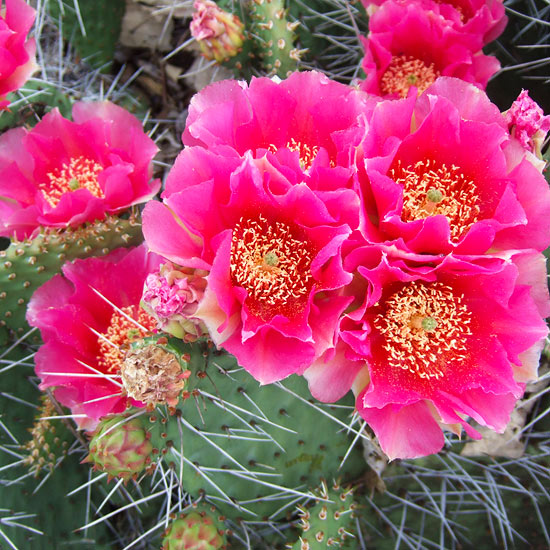






For gardeners in Northern regions, growing cactus plants can be a prickly subject. Cacti thrive on light, heat, and excellent drainage. Though you may think they're limited to the Desert Southwest, many are hardy enough to grow deep into Canada. In fact, cactus plants are native only to North and South America.
To successfully grow cacti in cold-winter climates, it's important to understand how they grow. All cacti are succulents -- plants that can store water in their roots, stems, and leaves. But not all succulents are cacti.
It's sometimes difficult to tell which succulent is really a cactus. There's really only one way to know: All cacti -- and only cacti -- have spine cushions, called areoles. These look like small bumps from which spines, branches, leaves, and flowers grow.
Another great distinctive plant in the garden? Pitcher plants; click here to learn how to grow them.
How To Grow Cold-Climate Cactus
Cactus plants that grow in cold-weather regions prefer much the same conditions as their southern counterparts. Place them in sunny, dry locations; they need sun to bloom.
Cacti require soil that drains quickly but avoid growing them in pure sand, which doesn't hold enough nutrients. Add 40-60 percent coarse sand and up to 10 percent compost to garden soil or purchased topsoil for a nutrient-rich, fast-draining mix. Or add pea gravel in place of some of the sand. Avoid using fine-grain sand; it gums up the soil instead of adding drainage.
Raised beds are recommended to provide excellent drainage. The more rain your area gets, the more drainage you need. In super-wet regions, grow cacti in pots under a shelter such as a roof overhang. Likewise, never plant cacti in regular or clay soil as they can easily get too much water and die.
Cactus plants do need some water. The best practice is to simply let Mother Nature do the watering for you. However, if you go several weeks in hot, dry weather without rain, feel free to water them. If the weather has been hot and dry and the plants look limp or are beginning to droop, they're telling you they need water.
Avoid watering cactus in the fall or winter. Cactus plants begin to shrink and take on a wilted, off-color appearance to prepare themselves for the coming weather. If you water them then, the excess water freezes and the plant dies.
Cactus plants grown in the ground don't need much fertilizer but they benefit from spring applications of compost or a liquid fertilizer designed for bulb or vegetable use. Avoid fertilizers with a large nitrogen component (the first number of the three shown on the package). Nitrogen causes rapid growth, but the plant may be too tender and become susceptible to winter damage, especially late in the growing season.
After planting cactus plants, avoid disturbing the soil around their shallow roots. Pea gravel or other small rock mulch prevents soil from blowing away, assists with weed prevention, and keeps the soil temperature even.
In areas with plenty of snow cover, hardy cacti easily survive. In areas with harsh winds and sun but little snow, cacti can become sunburned or frostbitten. To prevent damage, carefully cover the plants with burlap as late in the season as possible. The burlap allows the plants to breathe while protecting them from sun, ice, and wind. During warmer winters, carefully place a structure such as a canvas tent over the cactus plants to shelter them from excess moisture.
continue reading belowBecause of the wide variety of plants within each species, check the hardiness of all cacti before buying them for outdoor use.
The champions of cold-hardy cacti come from the prickly pear family, known botanically as Opuntia. There are many kinds of cacti in this family, but two of the toughest are Opuntia fragilis, hardy to -35 degrees F, and Opuntia poryapantha, hardy to -25°F. The eastern prickly pear (Opuntia compressa), native to most parts of the eastern United States and southern Ontario, is an easy-to-grow choice. Its juicy red fruits (the "pear" of the common name) are edible.
Opuntia species come in a wide variety of sizes and shapes. They grow with paddlelike pads and flowers that grow in red, bright pink, or yellow.
Not all prickly pears are hardy in cold-winter climates.
Other cactus plants with cold-weather tolerance to Zones 5 or 6 include:
Learn more about prickly pear cactus.
Copyright © www.100flowers.win Botanic Garden All Rights Reserved